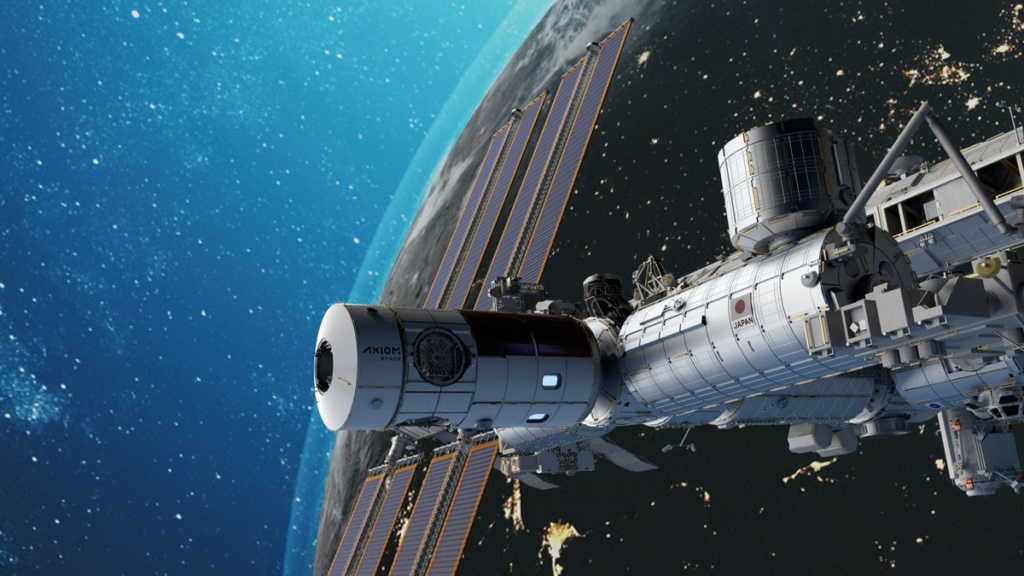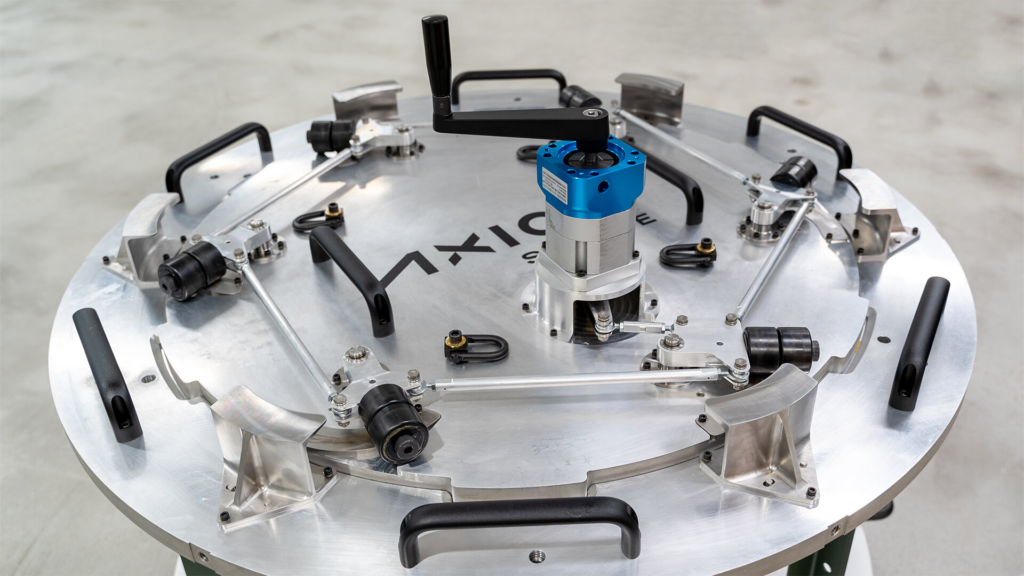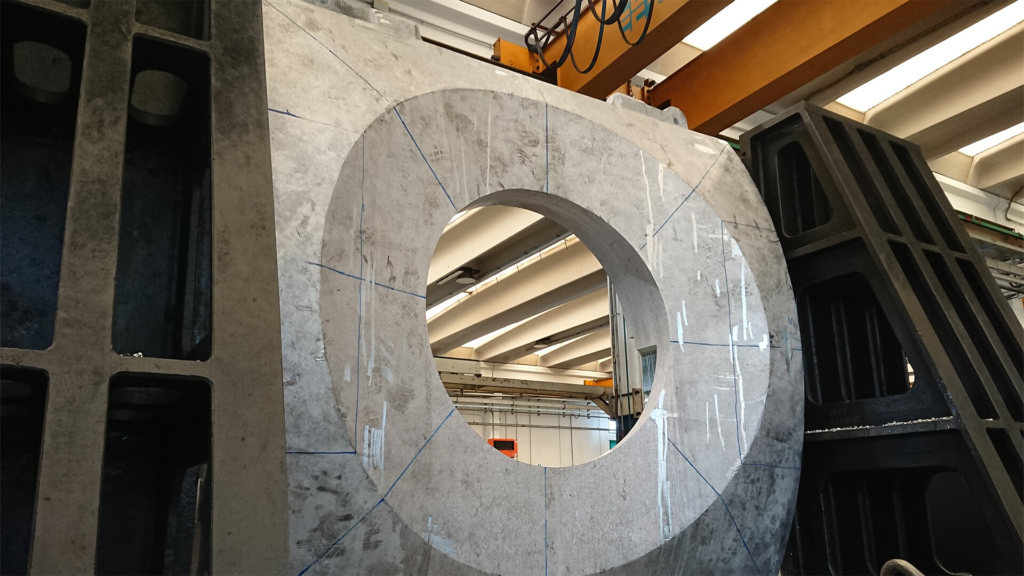
Axiom Space Continues To Work Towards The Future of Space Access
Right now, many different companies are working on new and unique ways to access space. This typically is with different next generation launch vehicles. However, there are other companies such as Axiom Space who are working on destinations rather than rockets. Specifically, over the past few years, Axiom has been working to create a commercial space station.
After winning a significant contract from NASA not long ago, Axiom has completed different segments and other important tests. The plan consists of joining with the International Space Station before separating into its own station once the ISS is retired. In the last few weeks Axiom has announced more information regarding the company and the future of space infrastructure.
Axiom Space and the Hungarian government’s Ministry of Foreign Affairs and Trade just signed a memorandum of understanding (MOU) to further their existing relationship in human spaceflight and to advance opportunities in space research and technology development. Here I will go more in-depth into the recent updates from Axiom, how the station progress is going, and what to expect in the coming months and years.
Recent Updates

Axiom Space has stayed busy in the attempt to create the first commercial space station. Just yesterday the company tweeted saying, “Axiom Space has signed a second agreement with Hungary to build on efforts to cultivate a robust economy in space and support their initiatives in human spaceflight.” More specifically, they signed a memorandum of understanding (MOU) to further their existing relationship in human spaceflight and to advance opportunities in space research and technology development. The main focus of the new agreement is to further the Hungarian to Orbit (HUNOR) program, Hungary’s astronaut program, which aims to send a Hungarian astronaut to the International Space Station (ISS) via a future Axiom Space commercial astronaut mission. Building off the first agreement between Axiom and the Hungarian government, signed on December of 2021, which formalized a partnership to return a Hungarian astronaut to space, this MOU enables a wide range of cooperation and possible joint developments between Axiom Space and Hungary. It acknowledges both the importance the company plays in helping to define the future of human space flight, including through the future Axiom Station, as well as the capacities and space heritage of the Hungarian space sector.
“As we enter this new era of commercial spaceflight, it is vital that the U.S. space industry continues forging relationships with nations committed to collaborating in microgravity research and bringing those benefits back to the people of Earth. The U.S. has a long history of international cooperation in space, bringing countries together for the purpose of benefiting all humans, everywhere,” said Michael Suffredini, President and CEO of Axiom Space “This second agreement between Hungary and Axiom Space builds on efforts to cultivate a robust economy in space by engaging government and industry partnerships. Such collaborations have the power to transform what was once only imaginable,” said Suffredini. “We look forward to expanding our relationship with Hungary to include new initiatives in human spaceflight, science, and STEM.”
This new agreement underscores Axiom Space and Hungary’s common interest to utilize space for peaceful purposes and promote scientific advancement through international collaboration. Under this agreement, Axiom and Hungary will collaborate to enable scientific research and technology demonstrations in microgravity, develop in-space manufacturing capabilities, and inspire the next generation of a strong and capable STEM workforce.
Axiom Station

While the company is working on different deals and partnerships around the globe, they are also continuing to work on the station itself. Following the completion of preliminary and critical design reviews in collaboration with NASA earlier this fall, Axiom’s partners at Thales Alenia Space began welding and machining activities for the primary structures of Axiom Station’s first module. The first pieces of fabricated flight hardware, are beginning to come together. In early 2023, the assembled module will join the company in Houston where they will complete the final assembly and integration to prepare for a late 2024 launch of the first section of the next-generation platform for breakthrough innovation in low-Earth orbit.
Axiom includes a gallery of images that highlight some of the company’s progress. Starting with the Axiom Station module hatches which will allow crews to access current and future station elements and visiting vehicles, enabling a dynamic environment for economic activity on orbit. This development unit validates the design’s ability to seal under a predetermined input force. Next, eight of the largest windows ever constructed for the space environment will encircle the Axiom Earth Observatory cupola, allowing Axiom Station’s entire crew to overlook the Earth in 360-degree freedom from orbit. This test unit continues to undergo increasingly extensive vacuum seal and stress testing to confirm the design meets all leak rate, outgassing, and material deformation requirements. In addition, agile adoption of new technologies has avionics on pace to be Axiom Station’s first flight-ready system and embodies the expert touch that characterizes its next-generation design. Deep into their development, this test bed is used to test, debug, and validate its code. Looking at the core of each module, each Axiom module’s primary structure features four radial bulkheads to which other space station modules and visiting spacecraft can attach, supporting increased traffic and future expansion. The first Axiom module’s bulkheads are well into their machining at our partner Thales Alenia Space’s Turin facility. Finally, Axiom modules are each individual spacecraft equipped with systems need to maneuver in orbit, including propulsion thrusters developed in-house. This test unit continues to cycle through new and progressively longer hot-fire cycles to refine the design.
Axiom describes that in the weightless splendor of Earth’s orbit, research has led to discoveries in medicine, materials, and manufacturing previously kept hidden by gravity. Countries have formed bonds that fly above geopolitics. Humans have learned how to live and work in space as a precursor to a future out amidst the Solar System. Astronauts have returned with a transpersonal revelation on the nature of our interdependence with our home, and with each other. These space-driven evolutions have fundamentally improved life back on Earth in irreversible ways. And we’ve only scratched the surface of that radical potential. Beyond our planet’s sky, anyone could make the discovery that reshapes an industry, realize a dream that lifts up a nation, or come face-to-face with transcendence. Clearing the path to Low Earth Orbit for everyone, including you, is about the question that has pushed us to the turn of every epoch in the history of humankind.
Going more in-depth into the possibilities with the space environment, Axiom offers many opportunities including 3D bioprinting. 3D bioprinting holds the potential for the fabrication of reproducible human tissue and whole organs for the purposes of pharmaceutical drug screening, disease research, and regenerative medicine applications. Current technology utilizes an additive manufacturing process that prints functional tissues through layered deposition of ‘bio inks’ that are composed of cells, growth factors, extracellular matrix components, and other biomaterial. The technology has come a long way, with successful implantation of functional 3D-bioprinted hyper-elastic bone and prosthetic ovaries in rodents. Construction of structural tissues such as bone and cartilage have seen great advancements, but there are challenges in the assembly of soft tissues such as blood vessels and muscles. This is due to terrestrial gravity and the forces imposed on printed tissues that cause structural collapse. To overcome these challenges, researchers have experimented with and tested a variety of bio inks to optimize physiochemical properties. To support the tissue’s 3D structure, viscosity of bio inks is increased to improve rigidity. However, as viscosity is increased, higher pressure is required for extrusion from the bioprinter, which increases shear stress on the cell thereby negatively affecting cell viability. Microgravity can function as a cofactor for 3D printing of tissues. In the absence of gravitational forces, lower-viscosity bio inks can be used, improving printability of bio inks and viability of cells. Biotech companies are well on their way to developing the equipment and optimizing conditions for bioprinting tissue in microgravity, and several projects are in progress.
Conclusion
Low Earth Orbit offers an endless amount of unique opportunities. This being said, it is by no means easy to create a space station. Axiom Space is working to create partnerships and modules for a future commercial space station. We will have to wait and see how it progresses and the impact it has on the space industry.
